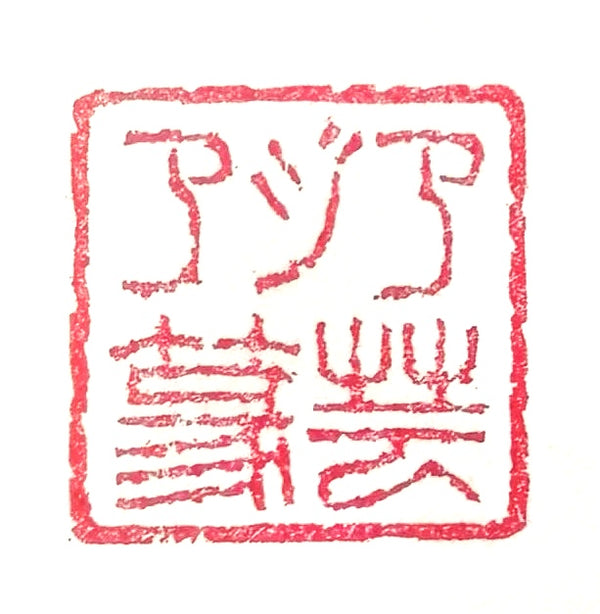Seal Carving Techniques and Points to Note: A Basic Guide to Bringing Out the Charm of Seal Carving
Share
Seal carving is a traditional Eastern art of carving characters into stone, which, together with calligraphy, adds depth to the work. The seal material used is not just a material; its beauty and meaning are brought out to the fullest by the carving.
This article is easy to understand even for beginners, and introduces basic seal carving techniques and important points to keep in mind. It is perfect for those trying seal carving for the first time, those who want to improve their skills, and those who want to deepen their understanding of how to choose and use seal materials.
Seal carving is a traditional Eastern art of carving characters into stone, which, together with calligraphy, adds depth to the work. The seal material used is not just a material; its beauty and meaning are brought out to the fullest by the carving.
This article is easy to understand even for beginners, and introduces basic seal carving techniques and important points to keep in mind. It is perfect for those trying seal carving for the first time, those who want to improve their skills, and those who want to deepen their understanding of how to choose and use seal materials.
Engraving procedure for seal material (basic flow)
1. Draft (design)
First, write the characters to be engraved on the seal surface in reverse. You can either write them directly with a brush or transfer the impression. At this point, you can also choose between red ink (leaving the characters intact) or white ink (carving the characters).
2. Carving out the outer frame
Use a seal knife to carve the outer periphery of the seal or the outline of each character. Proceed carefully, checking the thickness and placement of the lines.
3. Honbori (finishing engraving)
The carving is completed by carving the inside of the lines and the background along the outline. For white characters, the lines are thin and precise, while for red characters, the background is dug deep to make the characters stand out.
4. Test stamping (trial stamp)
By applying ink to the seal and making a test impression, you can check for any remaining marks or irregularities in the lines. This test impression is a very important process in improving the quality of the work.
Commonly used carving techniques
|
Technique name |
explanation |
Difficulty |
|---|---|---|
|
Vermilion |
The background is carved to leave the text. Highly visible, recommended for beginners. |
★★☆☆☆ |
|
white text |
The letters are carved and the background is left intact, creating a calm finish. |
★★★★☆ |
|
Yin-Yang carving |
An advanced technique that combines red and white characters. |
★★★★★ |
Important points and advice when engraving
1. Immobilization to prevent injury
Make sure to secure the seal material firmly on the seal bed. If it slips during carving, it could lead to injury or failure.
2. Don't carve too much
Especially with white characters, once you carve too much, you cannot go back to the original state. The key is to carve shallowly and carefully, little by little.
3. Pay attention to the carving direction
When carving lines, be careful of the direction you apply pressure and the fibers (crystals) of the seal material. Applying too much pressure can chip the stone.
Points where beginners tend to make mistakes
Writing too big and it won't fit
It's confusing because it's hard to distinguish between the lines to be engraved and the lines to be left.
The angle of the knife is not constant, and the depth of the lines is uneven.
Finishing without a test press and realizing the imbalance after completion
Tips for improvement
Copying exemplary seal carving works (Koin Rinsho)
Carving many practice stamps
Understand the characteristics of red and white writing and use them appropriately
Decide on a theme for each piece and devise a composition
Observe other people's work on social media or at calligraphy exhibitions and steal their techniques.
summary
Carving seal material is the true joy of seal carving. It is a comprehensive art that requires not only carving technique, but also a sense of composition, balance, and calligraphy.
Even if you don't do it well at first, if you gradually get the hang of the feel of the seal knife, the depth of the lines, and the rhythm of the characters, you will be able to create a seal carving that is uniquely yours.
Please pick up your favorite seal material and enjoy the quiet time of carving.
